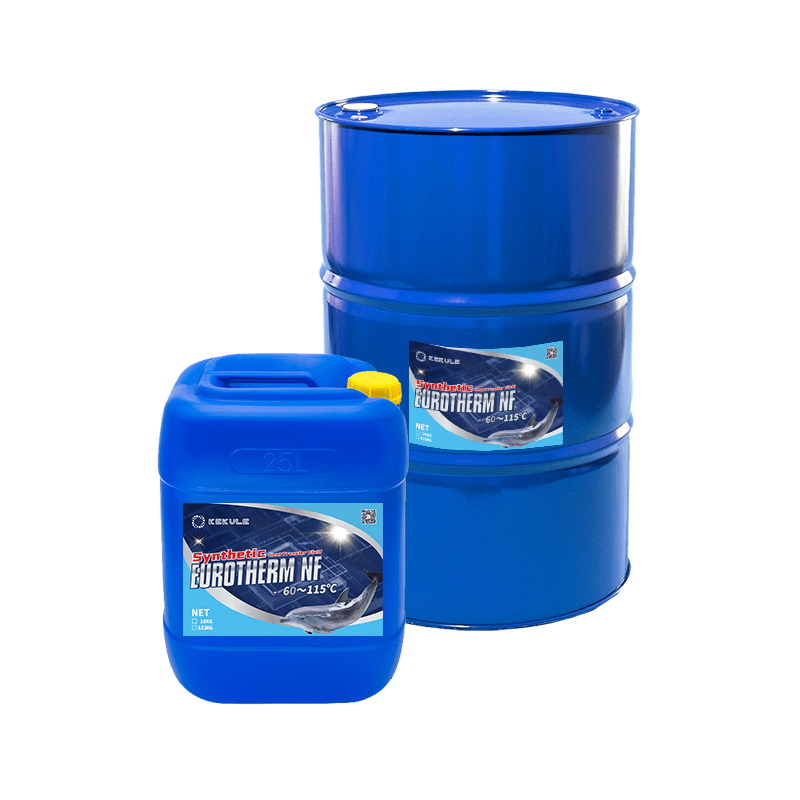Thermal Oil vs. Other Heat Transfer Fluids: Which Is Best for Your Application?
Thermal Oil vs. Other Heat Transfer Fluids: Which Is Best for Your Application?
Blog Article
Why Picking the Right Heat Transfer Fluid Is Essential for Optimal System Effectiveness
Choosing a suitable warm transfer liquid is a pivotal decision that can dramatically affect system effectiveness and operational expenses. The appropriate fluid not only improves thermal efficiency but likewise makes certain durability and integrity of equipment, reducing the danger of costly downtimes. Trick homes such as thermal conductivity, thickness, and thermal security should be very carefully reviewed to maximize power consumption and avoid potential failures. As the implications of this choice expand much past immediate performance, understanding the nuances of fluid option ends up being essential for any individual seeking to attain optimum system effectiveness. What variables should be focused on in this important decision-making process?
Relevance of Heat Transfer Fluids
What duty do warm transfer fluids play in commercial processes? Warm transfer fluids are important for the effective transfer of thermal power within numerous commercial systems. They promote the movement of warm from one location to an additional, guaranteeing that procedures run within optimum temperature level arrays. Their key function is to absorb warmth from a source, such as a heater or reactor, and supply it to an end individual, like a heat exchanger or purification column.
The option of heat transfer liquid can significantly impact power tools, effectiveness, and safety durability. Fluids must be capable of standing up to heats and pressures without deteriorating, as well as exhibit very little volatility and reduced toxicity. Their efficiency directly influences not just the productivity of the system but also its functional expenses.
In addition, warm transfer liquids play a critical function in keeping procedure control, guaranteeing that temperature level changes are lessened. This is especially important in sensitive applications such as pharmaceuticals and petrochemicals, where accurate temperature level monitoring is critical. Generally, the relevance of choosing the appropriate heat transfer liquid can not be overstated, as it is essential to enhancing industrial processes and enhancing overall system performance.
Key Characteristic to Consider
When selecting a warm transfer liquid, which vital properties should be focused on to make sure ideal efficiency? First and primary, thermal conductivity is essential; a fluid with high thermal conductivity will efficiently transfer warmth, reducing power loss. In addition, the certain warmth capability of the liquid is crucial, as it determines just how much power the fluid can keep and release, affecting general system responsiveness.
Thickness is one more substantial residential property to take into consideration, as it influences the fluid's circulation characteristics; reduced thickness fluids are typically liked for simpler circulation and lowered pumping energy. The liquid's temperature array is equally important; it should perform properly within the operational temperatures of the system without vaporizing or deteriorating.
Think about the environmental influence and security profile of the liquid, as policies and sustainability objectives increasingly affect liquid choice. By focusing on these essential residential properties, one can choose a warm transfer fluid that enhances system durability and integrity.

Effect On System Performance
The choice of warmth transfer liquid straight influences system effectiveness, affecting both power intake and functional efficiency. A liquid's thermal conductivity, thickness, and warmth capability play pivotal duties in exactly how properly it transfers warm within a system. Optimum liquid homes make certain that heat is absorbed and dispersed efficiently, lessening energy losses and enhancing the total performance of the system.

Additionally, the compatibility of the fluid with system materials can significantly influence performance. A liquid that triggers deterioration or destruction can bring about leaks and system failures, better decreasing effectiveness. In recap, the best warmth transfer liquid not just makes the most of power performance and decreases costs yet likewise improves the reliability and durability of the system, making it a vital consideration for engineers and decision-makers in thermal administration applications.
Typical Kinds Of Heat Transfer Fluids
A variety of warmth transfer liquids are generally used in thermal management systems, each with distinct residential properties suited to try this out particular applications. Water is just one of the most commonly utilized warmth transfer liquids due to its high details heat capability, affordable, and accessibility. Its freezing point restricts its use in low-temperature applications.
Thermal oils, commonly stemmed from oil, are another popular selection, especially in high-temperature systems. These fluids can run at raised temperatures without evaporating, making them optimal for industrial applications. They may have restrictions worrying thermal stability.
Refrigerants, made use of primarily in cooling systems, have unique thermodynamic residential properties that enable efficient heat transfer at low temperatures. Their option is important to make certain effectiveness and conformity with environmental laws.

Additionally, stage modification materials (PCMs) are gaining grip for their discover this info here capability to absorb and launch significant amounts of heat during stage shifts, providing a distinct service for thermal power storage. Each liquid's certain attributes should be examined for optimal performance.
Ideal Practices for Choice
Picking the appropriate warm transfer liquid involves cautious consideration of a number of vital variables that line up with the details demands of the application. Second, take into consideration the fluid's thermal conductivity, which impacts heat transfer rates; higher thermal conductivity usually leads to boosted performance.
Additionally, examine the fluid's viscosity, as it influences pumping energy and general system effectiveness. Lower viscosity liquids commonly reduce energy consumption during circulation. Compatibility with system materials is another crucial element; ensure that the fluid does not create deterioration or destruction of pipelines and components.
Next, consider the liquid's security and longevity, particularly in high-temperature applications. A stable liquid decreases maintenance and replacement costs. Ecological and safety policies ought to direct your selection procedure, highlighting ecologically pleasant and non-toxic alternatives when feasible.
Verdict
In final thought, picking the appropriate warm transfer liquid is essential for achieving ideal system performance. The ideal liquid improves thermal conductivity, decreases power losses, and advertises tools long life, eventually resulting in enhanced system reliability and efficiency. Comprehending the essential silicone oil buildings and effects of numerous liquids on system efficiency is essential for educated decision-making. Sticking to best methods in liquid selection can lead to substantial long-term price savings and operational performance.
Heat transfer fluids are essential for the reliable transfer of thermal energy within numerous commercial systems. In addition, the details warmth ability of the liquid is vital, as it determines exactly how much power the liquid can release and keep, affecting total system responsiveness.
Consider the environmental impact and safety account of the fluid, as laws and sustainability objectives progressively influence liquid choice - dielectric cooling fluid. A liquid's thermal conductivity, thickness, and warmth capacity play essential functions in how efficiently it transfers warmth within a system. Water is one of the most widely utilized warmth transfer liquids due to its high certain heat capability, low cost, and accessibility
Report this page